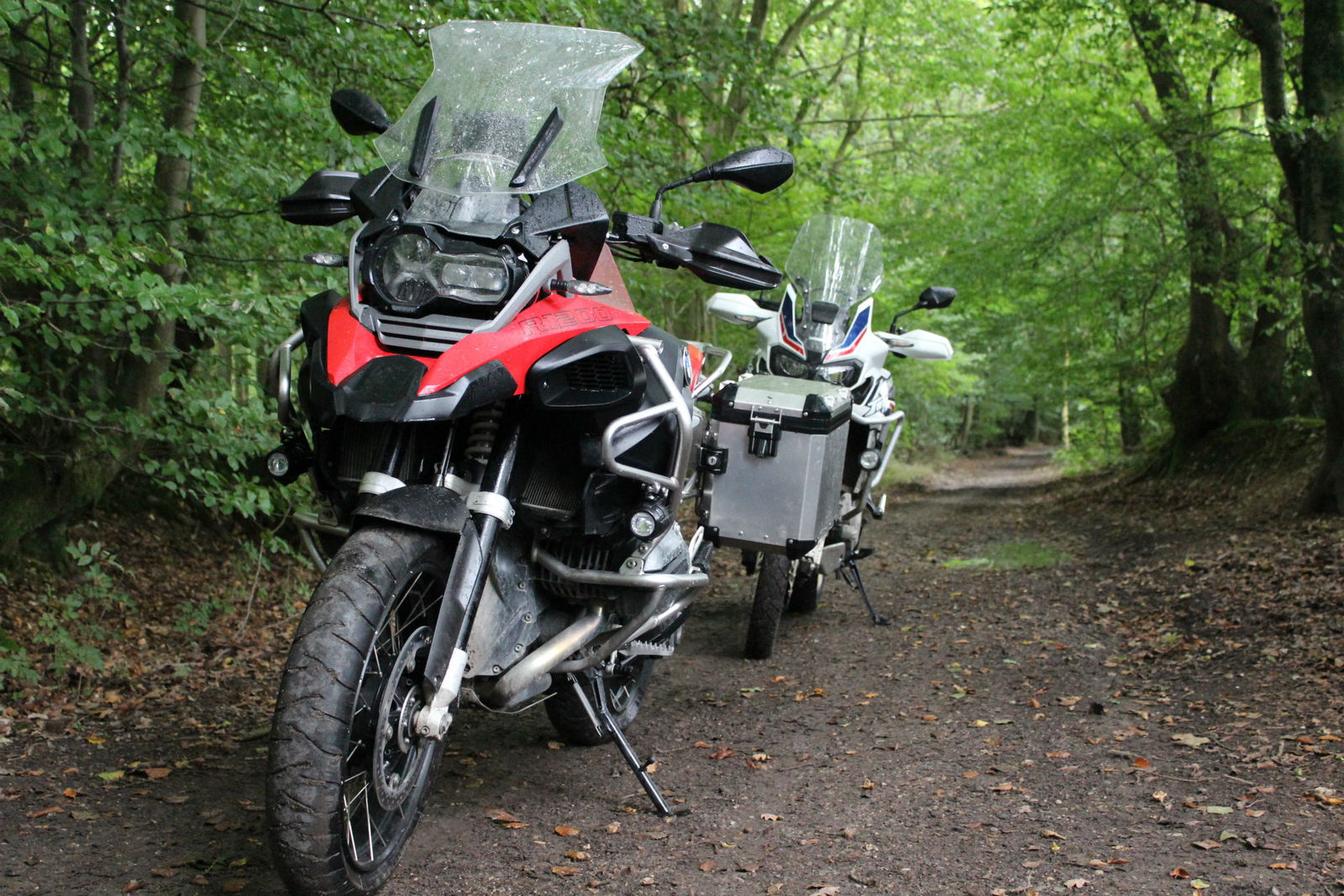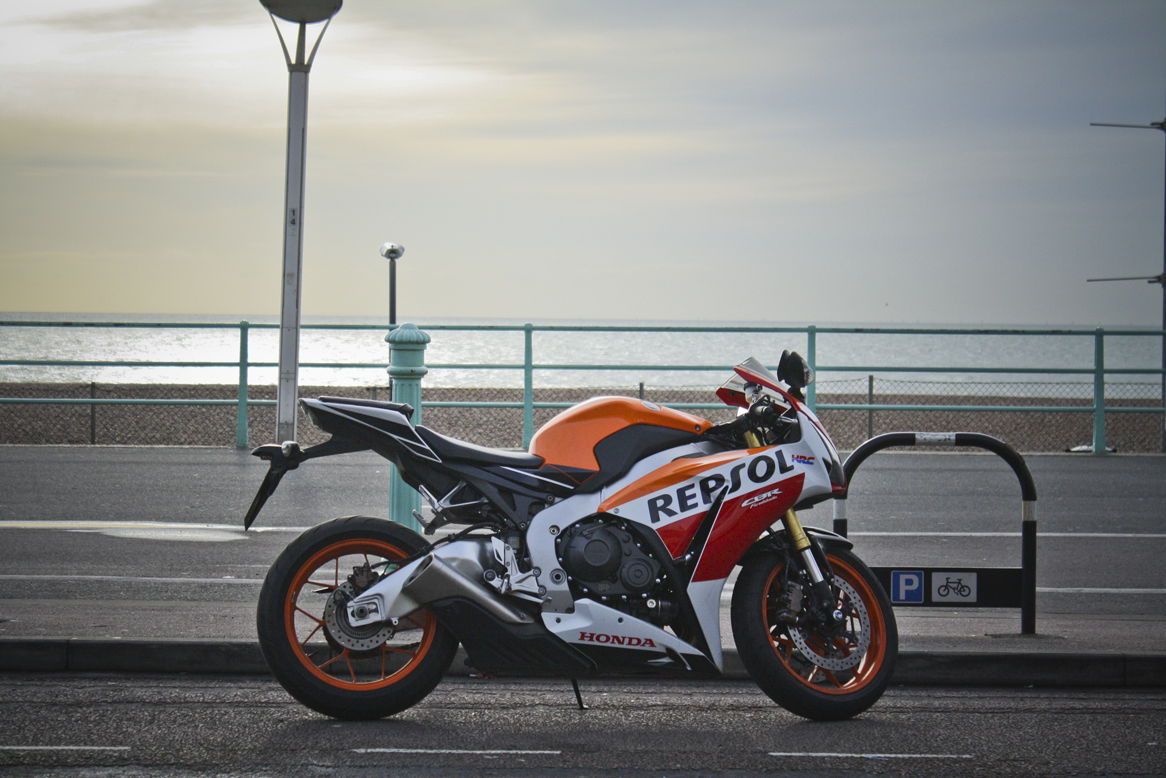Back-to-back test: Yamaha Tracer 700 vs Kawasaki Versys 650 review
A middle-weight parallel-twin sports-tourer? Didn’t Kawasaki think of that 10 years ago? We find out if the Tracer 700 is better than the bike that got there before it.

YAMAHA can’t do anything wrong with its MT bikes. Everyone seems to get excited about a new addition to the range, or a derivative of it.
The Tracer 700 brought the prospect of a fun and affordable sports-tourer, like the Tracer 900 but based on the MT-07 instead of the MT-09.
In the excitement of the launch in June, we almost forgot Kawasaki had come up with virtually the same idea 10 years earlier.
But they did. Like the Tracer 700, the Kawasaki Versys 650 is a fun, punchy parallel-twin with a tall screen, upright riding position, comfy seat and generous leg-room; a road-biased adventure-sports bike on 17-inch wheels.
The Tracer has a few more cubes, at 689cc to the Kawasaki’s 649cc, and on paper a bit more go, with 74.8hp and 50lbft compared to 69hp and 46lbft.
But they broadly offer very similar propositions as middleweight sports-tourers, both available with top-box and panniers.
Until you ride them.
Somehow the Tracer is 21kg lighter than the Versys, at 196kg compared to 217kg, and that difference is evident immediately.
The Tracer feels like a much smaller machine. That’s partly because it is a bit smaller, with a slightly lower seat, allowing an average-sized rider to get both feet flat on the ground. The Versys is more likely to have him standing on the balls of his feet.
But it’s mainly because of that colossal weight difference. The Yamaha has retained the character of the MT-07, a lightweight hooligan bike.
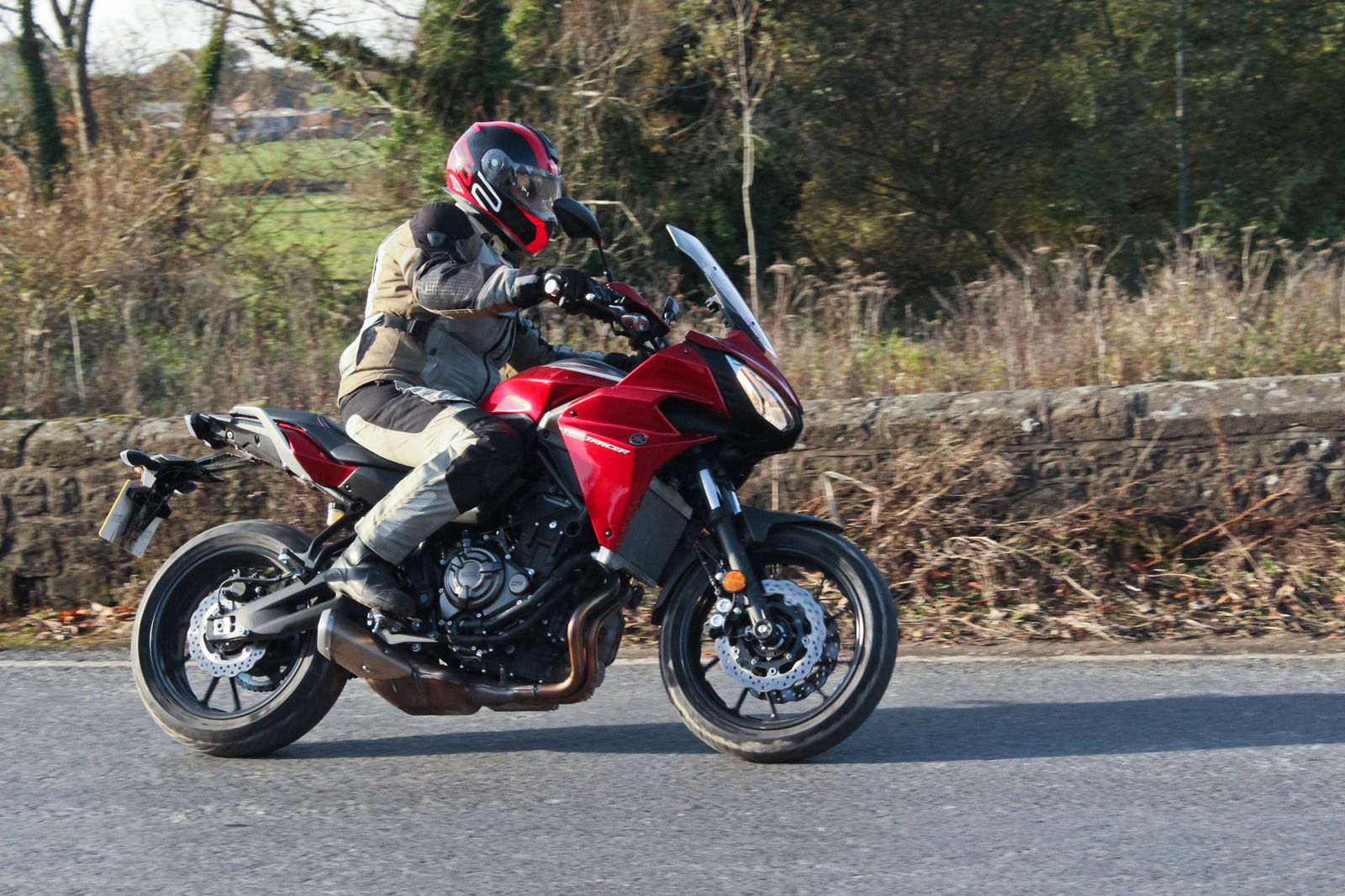
The Tracer 700 feels much smaller and lighter than the Versys 650.
What a shame it’s also retained too much of the MT-07’s bouncy suspension.
Both machines have softish suspension but, like the MT-07’s, the Tracer’s also feels under-damped. Under hard braking, turning and acceleration, the Yamaha feels more responsive than the Versys but also more all over the place.
It’s a shame because it looms in your mind when you see a twisty section of road ahead. You could live with it - it’s still great fun – but it’s a serious limitation of the bike nonetheless. It’s not what it could be.
The Versys feels more predictable, less flighty, if less agile. It’s more the big adventure bike, bulkier and a bit more comfortable, with a slightly plusher seat for rider and pillion.
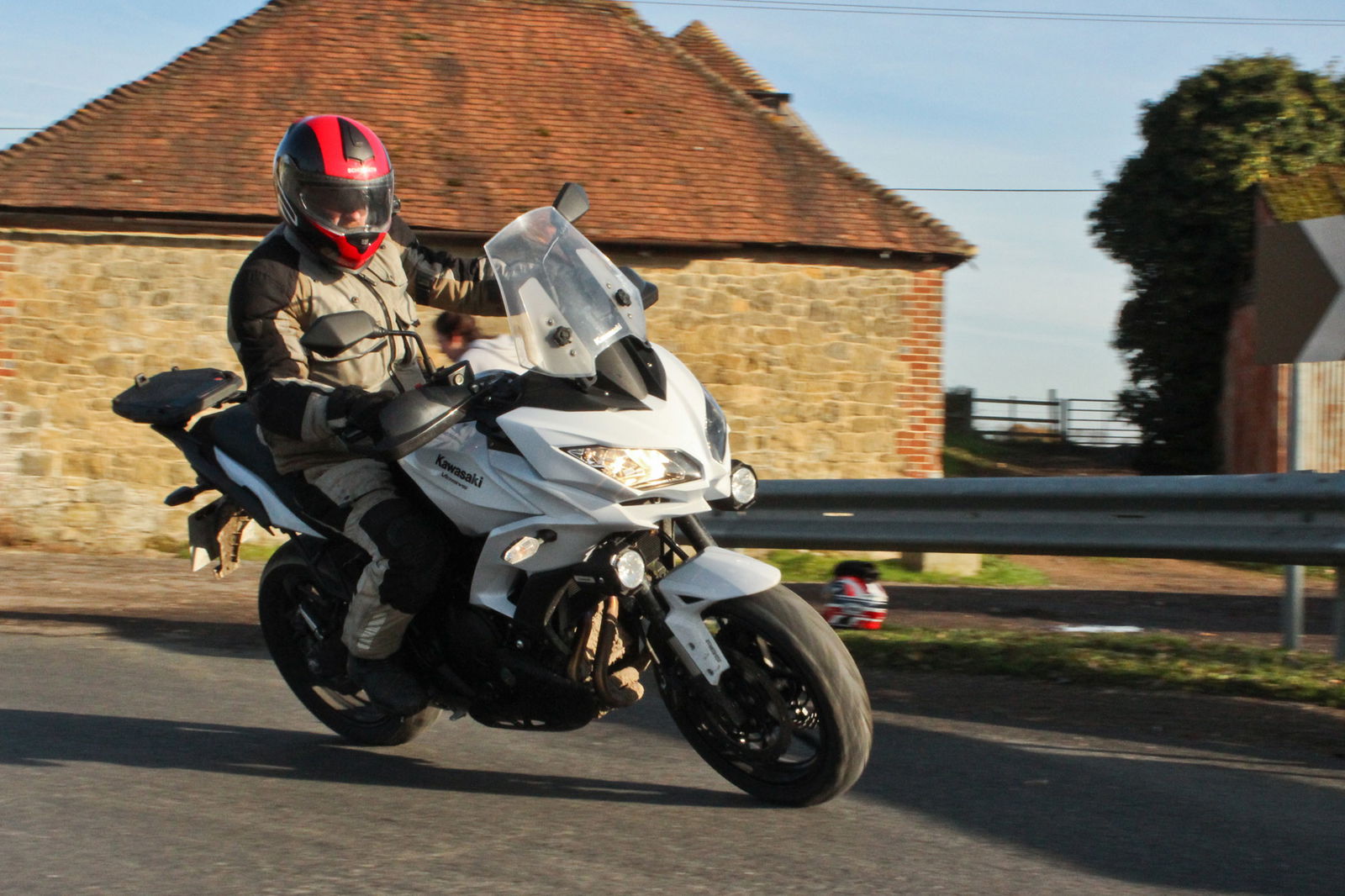
But the Versys 650 has better suspension damping.
Both bikes have tall adjustable screens. On the Tracer you have to stop and loosen two knobs on the back of the screen to raise or lower it. On Versys you actually have to park and get off, because the two knobs are on the front of the screen.
At their highest setting, both are at about chin level for a 5’9” rider, but the Kawasaki’s probably offers better overall protection because it’s wider at the bottom, where the Tracer 700’s tapers.
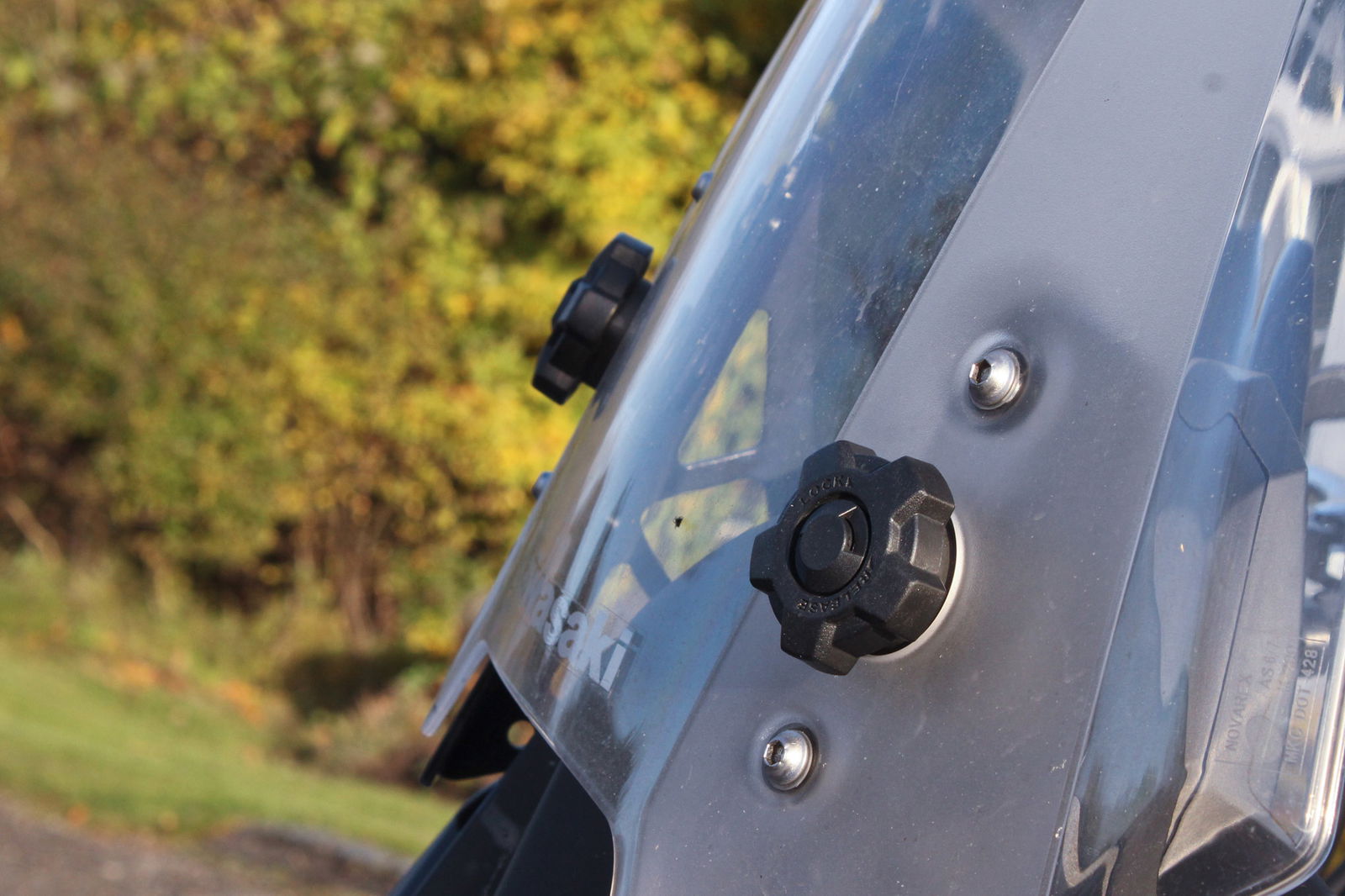
The Versys makes you get off to adjust the screen.
The Versys 650 also had more substantial hand-guards (although these are an optional extra on the Kawasaki). The Tracer’s are thinner, more or a styling exercise, incorporating the indicators. They share the same painted finish as the rest of the bodywork, which means they are bound to get an ugly scuff from a garage wall.
Both machines have budget-feeling brakes; powerful when you squeeze hard enough but not full of bite. The Tracer’s probably required the firmest squeeze, despite having four-piston front calipers to the Versys’ two-pot sliding ones. The difference is meagre though – you only notice it by hopping straight from one bike to the other.
With better suspension, brakes and comfort, the Versys 650 is in danger of looking like the better bike. But I don’t think it is.
If low-weight is one of the characteristics of the MT range, another is lively torque. When I first rode the Versys 650, in isolation, I thought it felt punchy. Next to the Tracer 700 it feels flat.
The Yamaha has a stonger mid-range and a much stronger top-end. It pulls well in fourth gear from low down in the range, around 3,000rpm, in places where the Versys 650 needs you to change down or be patient.
Combined with is lower weight, it makes for a much more aggressive and potent riding experience than the Kawasaki can offer.
The Yamaha feels and looks more contemporary, more 2016. I don’t mind a big analogue rev counter but the Versys 650’s somehow looks dated compared to the Tracer’s compact, letterbox-shaped digital instrument panel, which comes straight from the MT-07.
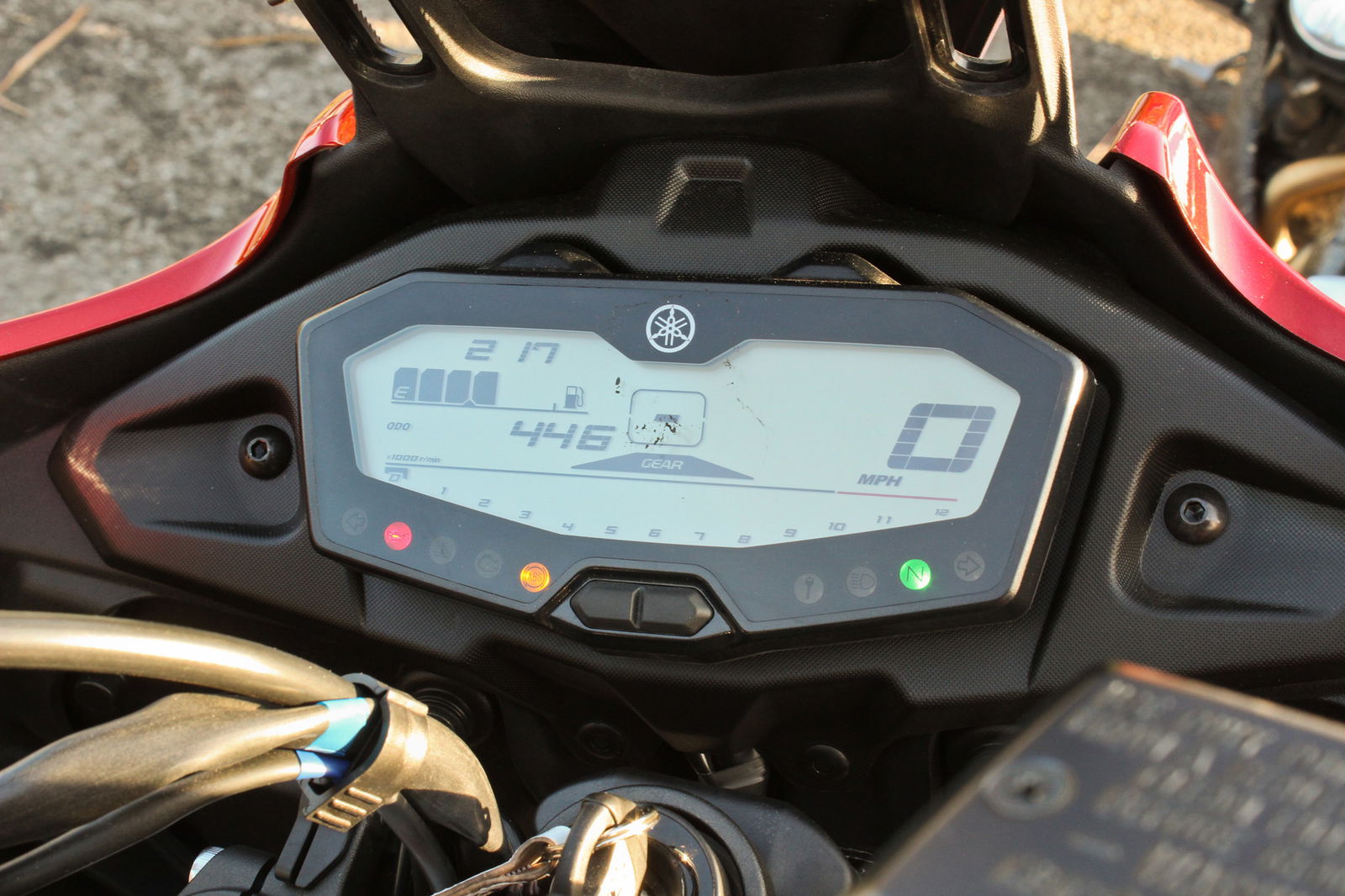
The Tracer has a modern-looking digital dash straight from the MT-07.
A gear indicator on the Versys looked like an early digital alarm clock, with bright red illuminated digits. The Tracer’s gear indicator is incorporated into the digital dash.
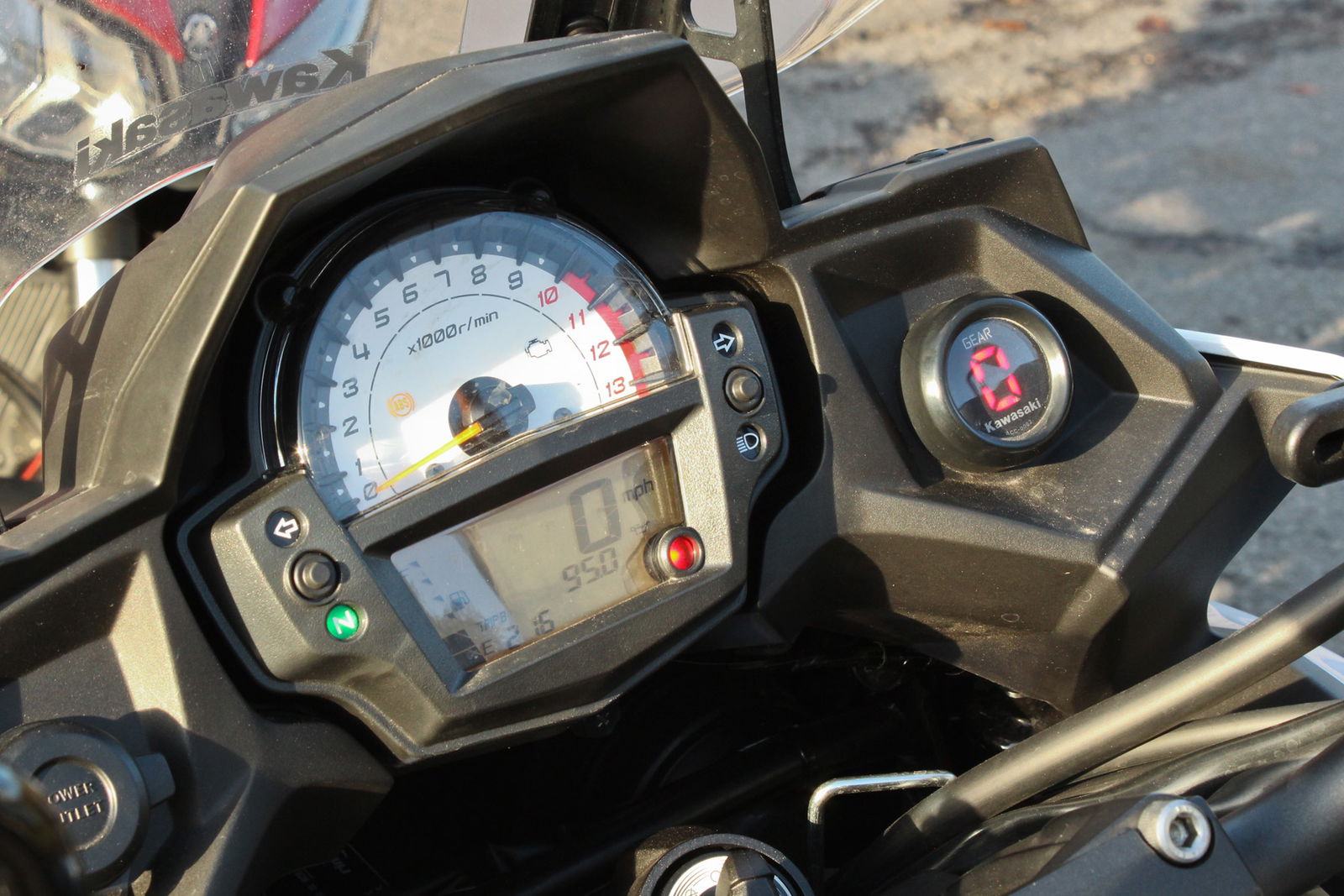
While the Versys has a gear indicator that resembles a 1980s digital alarm clock.
But if the Versys’ gear indicator seemed a bit cheap and tacky, at least it didn’t come off. We stuck a camera on the Tracer's tail unit using black tack, which is like blue tack but stickier, and when we took it off the Yamaha badge came with it. That doesn't inspire confidence in overall build quality. Black tack is sticky but I’ve never known it to pull bikes apart before.
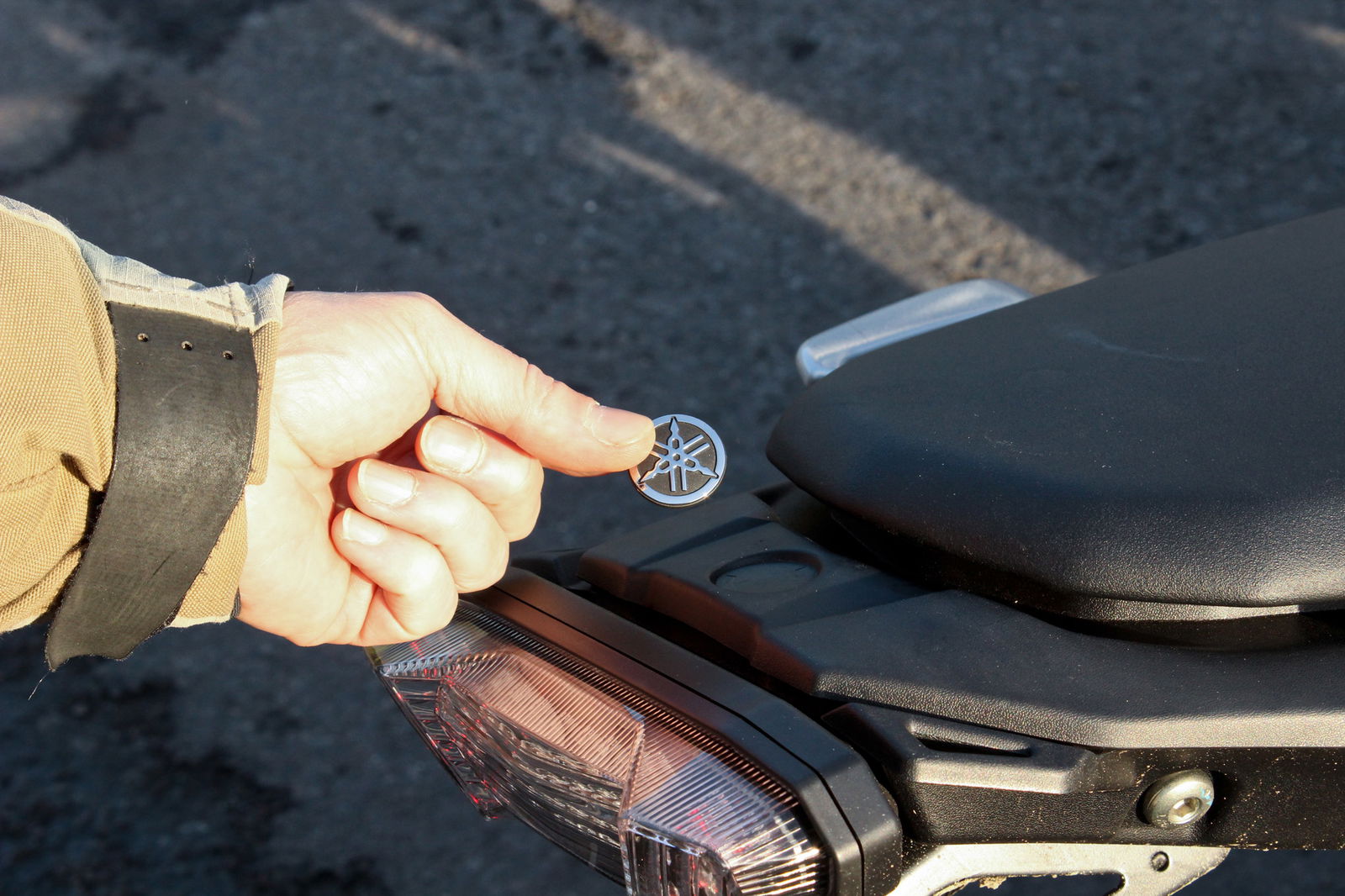
Whoops.
The Tracer wins though. It’s 90% as comfortable as the Versys. Maybe 95%. I’d just as happily ride it to the south of France. More happily in fact, because I'd have more fun.
The problem for the Versys is that the Tracer 700 makes it seem boring in comparison. That's not a price I’m willing to pay for 10% more comfort.
For a passenger, the Tracer might even prove more comfortable over distance thanks to lower pillion footrests and a bit more leg room. They’d have to get used to the bouncing, though.
It’s a shame Yamaha didn’t invest slightly more in the suspension. The 2017 Versys price has yet to be confirmed but, based on 2016 numbers, it’s £450 more expensive than the Tracer, at £6,749 compared to £6,299.
That’s £450 that could have paid for better damping, helping the Tracer 700 to win this test by an even bigger margin than it does.
Model tested: Kawasaki Versys 650
Price (2016): £6,749
Engine: 649cc parallel-twin
Power: 69hp @ 8,500rpm
Torque: 47lbft @ 7,900rpm
Kerb weight: 217kg
Frame: steel diamond
Suspension: 41 mm inverted telescopic fork with adjustable pre-load ad rebound damping, rear off-set shock with remote-adjustable pre-load
Brakes: twin floating 300mm petal front disc with two-piston caliper, rear 250mm petal disc with single-piston caliper. ABS.
Tank capacity: 21 litres
Seat height: 840mm
Availability: now
Colours: black/grey or titanium
Model tested: Yamaha Tracer 700
Price: £6,299
Engine: 689cc parallel-twin
Power: 75hp at 9,000rpm
Torque: 50.15lb/ft at 6,500rpm
Kerb weight: 196kg
Frame: steel diamond
Suspension: non-adjustable fork with 130mm travel, monoshock rear
Brakes: twin 282mm front discs with four-piston caliper, rear 245mm disc with two-piston caliper. ABS.
Tank capacity: 17 litres
Seat height: 835mm
Availability: now
Colours: red, blue or black
